Syn.: Anemonastrum narcissiflorum (L.) Holub, Homalocarpus narcissiflorus (L.) Schur, Anemone umbellata Lam.
Family: Ranunculaceae Juss.
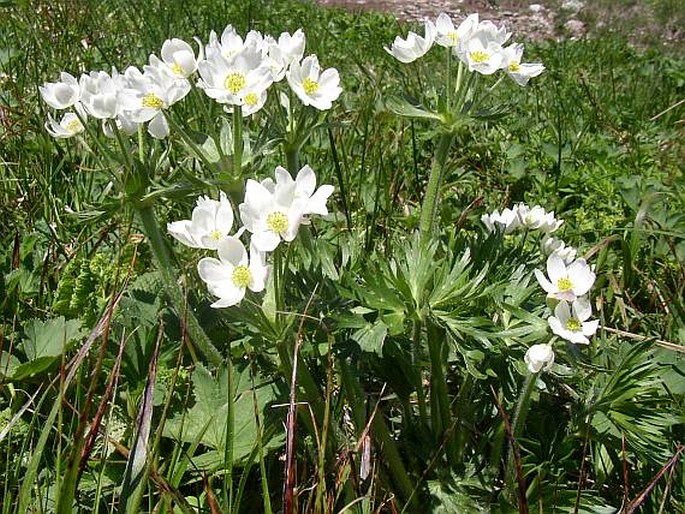
Distribution: Eurasia and North America – the taxonomy of this widespread and variable species is controversial, Anemone narcissiflora subsp. narcissiflora is distributed in mountains of southern and central Europe, subsp. fasciculata in Caucasus, subsp. protracta in central Asia and China, subsp. crinita in Siberia and China, subsp. nipponica in Japan, subsp. villosissima in Siberia and Alaska, subsp. alaskana and subsp. zephyra in North America.
Ecology: It grows in subalpine meadows and avalanche paths (Europe), but also in bamboo thickets (China) or in tundra (Siberia), at elevations up to 4000 m asl.
Description: Perennial herb, 20–40(–50) cm tall. Stems erect, pubescent. Basal leaves petiolate, deeply palmately divided; cauline leaves sessile, deeply cut, segments narrowly linear. Inflorescence umbellate, with 3–8 flowers; flowers 2–3(–4) cm in diameter, white, sometimes pinkish outside; pedicels 3–4 cm; perianth-segments 5 or 6, obovate. The fruits are achenes.
Threat and protection: The Narcissus Anemone is protected by law in Austria, Czechia, Germany, Italy, Poland and Switzerland.
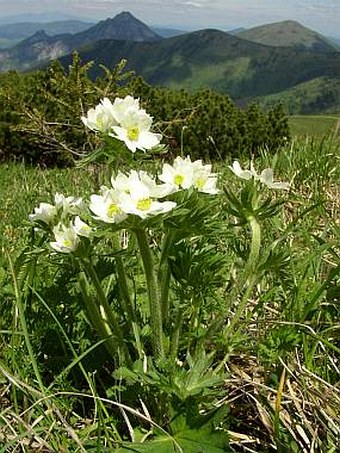
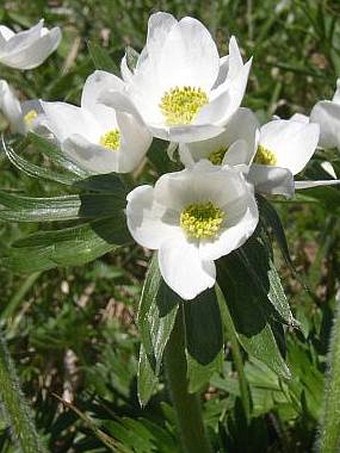
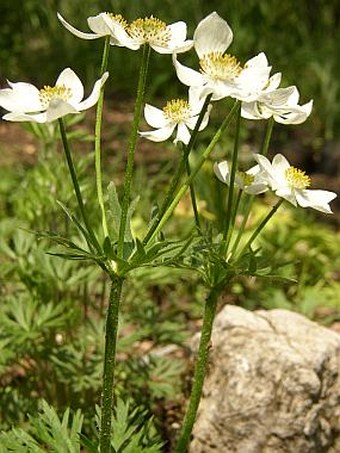
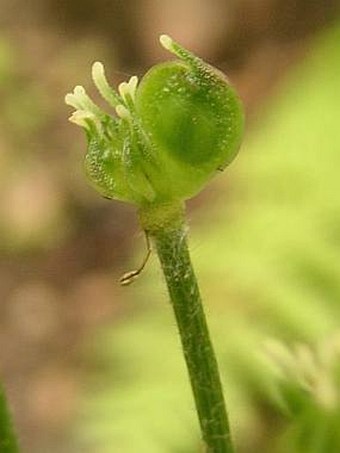
These images were taken in Slovakia, Malá Fatra (June 2004).


